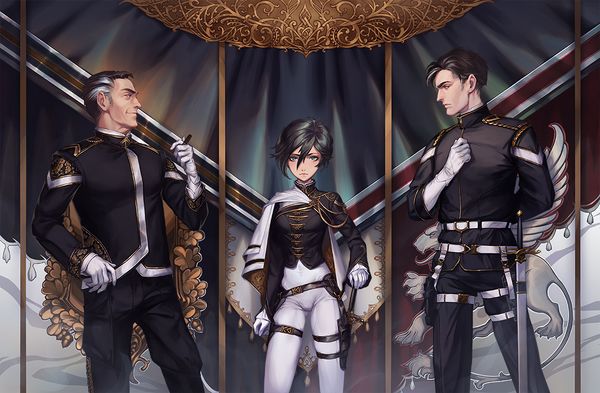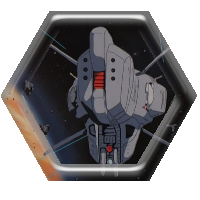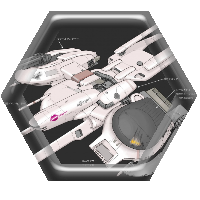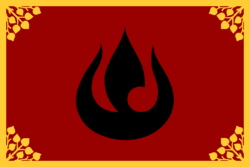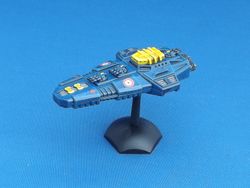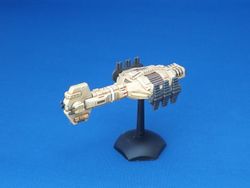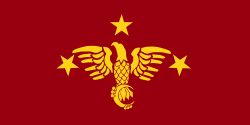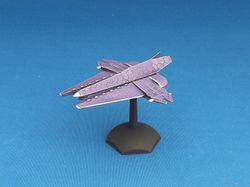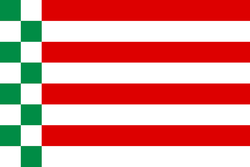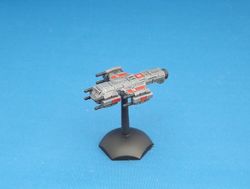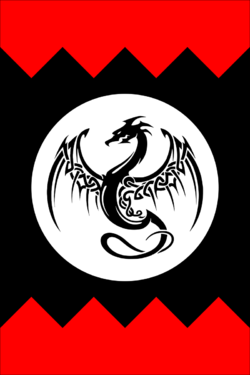Princesses of the Cosmos
Character Design
XP
Character specifications are used in two ways:
- In tactical battle - Specific skills and/or skill combinations are used in tactical battles. While some may have alternatives, by and large tactical battles are highly structured and there is no room for variation.
- During roleplaying - The use of stats and skills is intended to be freeform during roleplaying sessions with the selected skill or combination determing the actions taken and how it is taken.
Roleplaying Basics
- Your stats are your base dice pool, how many D10s you roll per action. Stats cost x3 XP.
- Your skills are a modifier to the difficulty level. Skills have a base cost of 1 XP.
The cost of each level is the new level squared.
All stats start at 1. Note your bonuses from Nature and Nurture and apply them as well. Afterwards, you have a starting pool of 250 XP.
Stats
- Body
- Intellect
- Charisma
- Leadership
Skills
- Rulership
- Eye for Talent -
- Strategy - The art of staying one move ahead of your opponent; the pieces are planets, fleets and industries.
- Politics - The art of stayong one game ahead of your opponent, perhaps before they even realize you are in opposition.
- Dominance - A manifest aura of superiority is often the most efficacious way of getting your lessers to do your bidding.
- Bureaucracy - Bureaucracy has rules all its own. You know how to follow them, how to skate them and how to break them.
- Courtly Manners
- Ettiquette - Manners are important. Knowing how to make a good impression and maintain is may be the literal difference between a date and a duel in the more touchy corners of Imperial high society.
- Insinuation - Politics is the big picture, but the big picture is made up of small brush strokes. After all, the best way to win an argument is to have your opponent aggreeing with you before it even starts.
- Seduction - Not all seduction is about the sensual pleasures of the flesh and companionship - though to be fair, a great deal is.
- Sharp Ears - You are adept at connecting scattered bits of gossip, news and insinuations to piece together the big picture.
- Inspire - You won't even need to die gloriously to have statues commissioned of you.
- Warfare
- Navigation -
- Gunnery -
- Shiphandling -
- Tactics -
- Electronics -
- Academics
- Eureka! - The low-born call such things 'jury-rigging' but you can do better.
- Engineering - Like a doctor and trainer, but for starships and other, lesser vehicles. Engineers are one of the most respected professions for commoners and only the most foolish of nobles treat them as anything other than the masters that they are.
- Bookishness - There are an almost innumerable number of intellectual disciplines out there, many of them quite important to the proper functioning of technic civilization.
- Logistics - It is not enough to simply order ships and men to death or glory, but one must also understand (or be served by those who do) the intricacies of the quartermaster's art.
- Languages - While all nobles are expected to know not just Galach but Jardenic as well, modern teaching techniques make it relatively easy to acquire many other languages as well.
- Skullduggery
- Carousing - You are always the life of the party, except when you get in a duel and then occasionally you're also the death of the party.
- Casing - You are blessed with sharp eyes and a keen sense of the misplaced, making you a natural detective.
- Thuggery - There are men (and women!) who only understand the language of violence and crime. You are not one of them, but you are an adept translator.
- Disguise - No-one would suspect that the maid with the particularly wide shoulders was actually Admiral van der Hellsing on a secret rendezvous with the Countess Drakk.
- Gladhandling - The galaxy is full of people who operate with baser - or just simpler - motives who can be readily convinced with the right words from a fellow man of the earth.
- Elan
- Pugilism - You are a threat to anyone unwise enough to get within arm's reach, capable of punishing evildoers with not just your fists but any other weapon that comes to hand.
- Gunfighting - If those evildoers are out of arm's reach that doesn't mean they are untouchable!
- Equestrianship - If it can be controlled by a single individual, you are its master. There's far less difference between a horse and a jet fighter than you might think.
- Olympiad - Your general health and fitness. Ideal for an all-day battle or an all-night encounter with the Duchess of Saphos Prime.
- Backbone - How resistant you are to having your spirit broken, be it from physical or mental attacks. Stiff upper lip, you've still got one arm left!
Nemesis
Heroes always have flaws; at the same time heroic flaws can be blessings in disguise. After all, it takes a certain level of ego to stand in front of the Emperor and call out his favorite and no hard-driving cavalry commander is complete without at least a bit of recklessness. As such, Nemesis can be applied both as a negative (either by the GM or exploiting other character's Nemesis as a penalty) or as a positive, applying your own to a roll as a bonus. This is, of course, situational; it is unlikely that Vengeful would apply at high tea, but you never know.
Every time when XP is awarded, you may add or subtract one dot of Nemesis, preferably if said Nemesis had been exercised in the preceeding session.
- Ego
- Reckless
- Lusty
- Vengeful
- Obsessive
- Greedy
- Cowardice
Family
- Born to the Purple: All Rulership skills start at 1 and get +1 to all Rulership skill checks.
- Court Family: All Courtly Manners skills start at 1 and get +1 to all Courtly Manners skill checks.
- Service Family: All Warfare or Academics skills start at 1 and get +1 to all skill checks of the selected skill group.
- Social Climbers: All Skullduggery skills start at 1 and get +1 to all Skullduggery skill checks.
- Commoner: All Elan skills start at 1 and get +1 to all Elan skill checks.
Formative
- Heir Apparent: Leadership starts at 3 and get +1 to all Leadership skill checks.
- Military Brat: Body starts at 3 and get +1 to all Body skill checks.
- Finishing School: Intellect starts at 3 and get +1 to all Intellect skill checks.
- Wild Child: Charisma starts at 3 and get +1 to all Charisma skill checks.
Fortune
Assets
Montauk
People of Montauk
Astegar van der Maartin, Baron Krill
Three prawns rampant on sable
70s (appears to be in his 40s), achieved some reknown in the Bast Suppression. Semi-retired, mostly manages his fief which is all of Beta Regio on Montauk.
Fiefs of Montauk
Capital District
Montauk's glittering capital where all the glitterati hang out, probably glitteringly. Also full of shopping, red light districts and various extraterritorial enclaves.
- Money, money, money
- Corruption
- Parties
- Prestige
Fort Montauk
Montauk's primary naval base, it includes various Fleet supply contracts. Also has the planet's main cargo spaceport, a sprawling expanse of concrete aprons, container farms and docking canals.
- Industry
- Spare ships
- Smuggling
Nichols Keel Forge
Montauk's primary (and only?) keelforge. Mostly supplies the civilian market.
- Builds keels
- Keel-building expertise (basic)
- Cost-cut on singlecore keels
The Yards
A dirty, polluted part of Montauk, The Yards are the planet's single largest employer and an important source of spacecraft for the sector. Mostly builds cargo ships, but normally has at least one warship under construction.
- Industry
- Cost cut on warships
- Additional cost cut on reserve-grade warships
Gottlieb Reserve Slips
Roughly fifty wallers are stored here, maintained in ordinary in case of need.
- Free ships, so long as you bring them back
- Light industry
Great Wall Montauk
The northernmost extant of the Great Wall facing the Rift. The forts are seriously dated and probably totally unnecessary, but they also only need skeleton crews.
- Gotta upkeep the forts
- Defensive stipend
- No meaningful income
- No industry
- Can probably shake down Rifter merchants.
The Montauk Lighthouse
Built by the Moai Culture, predating Phoenician arrival in the Cloud. Allows for effective travel across nearby systems.
- Defensive stipend
- No meaningful income
- No industry
- Tries her best
Jarl of the North
A vast tundra stretching to the northern polar icecap, full of braided streams, muskeg, ghost bears, jade falcons and snow ravens.
- Great hunting
- Kinda poor
- Lot of mining
- Liegelord of the Jarldoms for all your cyber-viking mercenary needs
Rapa Nui Islands
Ten thousand tropical islands. Sun, surf and serfs.
- Tourist spot
- Tourist money
- Ancient ruins
- Prestigious among the younger set
Other Sites
The Wormhole
Leads back into core Imperial territory.
Fleet Detachment Montauk
A half-dozen guardships to protect the wormhole, plus the various assorted fleet auxiliaries.
Beta Regio
The large southern hemisphere continent. Fief of Baron Krill.
Cathedral Montauk
The Church's extraterritorial enclave in the capital district. Not just a large and fancy cathedral, but barracks for papal guard too.
Blessed Belt
Granted 99-year parole to highsteaders. Currently in year 46.
- Scum
- Villainy
Rikitea Exclusion Zone
As per Church directive Cardinal Zulu Ten.
- Unspoiled archipelago
- Delta Dust shallows
Assets
- Fief Tax/Wealth
- Personal Wealth
- Fief Industry
- Misc Fief specialties (Rosenritters, keel forge, etc)
- Personal War Craft(s)
- Existing Debt (more points!)
- Clique Connections
- Favours Owed/Family Backing
- Spy Rings
- Skilled Household Staff
- Outside Inflence (summon the Inquisition, borrow a Fleet demisquadron, etc)
- Exceptional Character Abilities
Warships
Wallship
- Standardkeel
- 2 Long Beam
- 1 Plasma Blaster
Cavalry Cruiser
- Jennetkeel
- 1 Long Beam -or- 1 Missile Pod
- 2 Short Beam
- 1 Lance -or- 1 Plasma Blaster
- 4 Dragoon Racks
Dragoon
- Houndkeel
- 2 Burst Guns -or- 1 Short Railgun
Rifter Warbird http://www.ex-astris-scientia.org/scans/caps/ktinga-2-sti.jpg
- Jennetkeel
- 1 Heavy Torpedo
- 1 Short Disruptors
Weapons
Beams
The ubiquitous beam cannon is the most common weapon across known space, produced in vast numbers in a myriad different but very similar models. Beam cannons are favored for their balanced combat performance which is also achieved at low cost.
- Vector Lasers
- The Vector Lasers are the most ubiquitous form of naval artillery in known space; cheap and highly effective. As simple as an optic and a capacitor bank, a projector can quite literally be bolted onto the hull of a ship or in the place of cargo with the only limit being the ship’s generators. The rest of the system is supplied by the already existing keel or vector field – as the laser beam forms it is captured by the ship’s vector field. The vectoring minimizes diffusion even at extreme ranges and in the hands of a skilled gunnery officer the beam can literally chase a target.
- Since a defensive field can not simply refract a vectored laser the resulting interaction often produces a lasting splash or plume of diffusing energy visible even to the naked eye. A good fire control system can “bracket” a target by plotting splashes against the predictions of target movement, substantially improving the accuracy of target motion analysis – and following salvos.
- Short Beam: Range 3/6/9/12. Damage 2D10+5. Accuracy falloff 2/per, damage falloff 2/per from E
- Long Beam: Range 5/10/15/20. Damage 2D10+5. Accuracy falloff 2/per, damage falloff 2/per from E, Double Minimum (5)
Railguns
Kinetic weapons have been in use since time immemorial and while they have been long supplanted by energy weapons they still offer useful service.
- Short Railgun: Range 3/6/9/12. Damage 2D10+5. Accuracy falloff 3/per, halved Deflector effect
- Long Railgun: Range 5/10/15/20. Damage 2D10+5. Accuracy falloff 3/per, halved Deflector effect
- Note: Railguns may load solid shells, which increase their accuracy falloff to 3/per and reduce base range by 1 but Deflector effect is reduced to 1/3rd from 1/2. They also gain +2 armor piercing.
Misc Notes
De-rated keels
Over time and use, keels will slowly degrade. As such, it is a common policy to de-rated keels once they have lost a certain amount of power; this normally happens after two or three decades of regular use or longer for ships on lighter duty. De-rating a keel imposes less stress on it and extends the lifespan significantly; a de-rated keel can often continue operating for another century before it reaches retirement age and is either scrapped or converted to stationary power mode.
As a consequence, the aging out of keels tends to impose a natural lifespan on warships as well. While ships of the wall are generally built with removable keels and shuffle in and out of reserve status as needed, ships of the charge normally instead eliminate this feature as a cost/performance measure. Thus younger ships are normally treated as first-category ships while ones with de-rated keels are instead treated as second-category ships that are less effective on an individual basis. The age of the onboard mechanical systems also contributes.
Fundamental Concepts
- This is a clean-slate reboot of Space Princesses, returning to the very dawn of that game.
- It is focussed more on character adventures, intrigues with imperial cliques and managing the character's demesne.
- The party will also be more coherent as opposed to instant atomization; every PC will likely have some tie to the 'home' system/systems likely by Demesne.
- Ongoing discussion: D20 vs 2D10 vs D10
Character Design
- Characters will be generated with two pools of points
- XP is used for character stats and skills (or just ability-only system?)
- Assets is used for 'mega-aspects' such as a warship, family demesnes or standing, etc
- Assets can be converted to XP/used to buy character-level abilities (Rifter gene-hax!)
- Characters will have solid starting values and in-game growth will be slow.
- Variable ability cost depending on usefulness
- Suggested abilities
- 'Eye for Talent': Boosts ship stats if you get an opportunity to roll out and find good crew
- Suggested abilities
Demesne
One of the key elements of the campaign is Demesne. These provide important resources and need to be managed - essentially nation gameplay (very) lite.
- Resources:
- Wealth: This is mostly money, but also represents attention taken by your factors, etc. It is the main currency of the Demesne level. Wealth is used for buying stuff ranging from ships to personal equipment.
- Industry: This is used for building things (warships mostly!). Demesnes may or may not generate industry, in which case you'll need to pay for the industry too.
- Characters are assumed to have access to effectively unlimited 'common' gear because nobles are rich enough to buy as many M16s as they want, but Wealth is needed for stuff that provides actual bonuses; a Mk XXIV pattern blast-fusil made by Sir Kendrick the Robin-Faced, Master Armsmith of the VI Regency is no easy object to find.
- All actual (bonus-giving) gear should come with names and maybe a history.
- Budget cycle is undefined as of yet
- Characters may take their Demesne' wealth as taxes or may instead take it as loans which have interest but provide much more wealth.
- Welp you're in debt. Keep adventuring!
- Other noble characters might have estates in that situation, so you can squeeze them
Reputation
Reputation is a vitally important 'soft' stat; it is how well you are liked (or DISliked) by various factions and cliques in the Empire or outside. I'm using the term 'Clique' for all of these.
- Each Rep is tracked individually
- Rep can be used in two ways; to provide passive bonuses as levels increase or 'burnt' to provide immediate effects.
- Track both current and absolute (amount added over all time) Reputation. Having very high absolute Rep can still provide some passive bonuses but requires much more than current Rep.
- Rep effects could be getting some money (borrowing against your name to keep your estate working), having an extra warship present, getting an audience, etc.
- Friendly and opposed cliques can also gain or lose prestige as a relative percent. Doing stuff for the Forward Clique might also give you 20% Rep in Outwander Clique but will cost you -100% Rep in the Conservative Clique.
- Derived prestige only comes in after a certain threshold; below that you're still a nobody.
- Baseline family prestige? TBD
- That blonde brat!
Ship Combat
- Several weapons per ship
- Each will roll to-hit seperately
- Hits will then roll damage (provisionally 2D10 + modifier) against three thresholds
- Surface (shield HP lost)
- Penetrating (shield and armor HP lost)
- Critical (shield, armor and vital HP lost)
- Once shields are down, shield bonus no longer applies and all 'shield HP' damage is inflicted to armor.
- A ship with no armor HP takes armor damage to vitals,
- A ship that takes a hit recieves a blast marker if it does not already have one.
- A ship with a blast marker suffers a penalty on to-hit numbers, but all ships firing on a ship with a blast marker have a to-hit penalty as well.
- Blast marker is removed at the end of a ship's activation (eg, after it moves shoots etc)
- Ships can spend thrust (movement) to gain a defensive bonus until their next activation. The thrust for every level of this bonus increases the higher the bonus.
Ship combat is intended that PCs will have a single ship or at most a small squadron of light ships.
- Specific rolling TBD
- Probably lightly detailed, with several weapon systems per ship.
- Weapons are simple but will have individual stats - a bit more detailed than Space Princesses the First.
- Armor acts as a damage reducer.
- Shields are TBD (similar to armor? bubble HP?)
- Upon hitting a ship, roll on the location.
- Different locations have different armor values
- Void locations represent smaller ships that are simply not there. Guess you didn't hit that DD after all.
- Several standard hit tables will be generated. Most ships will fall into a small number of templates.
- Once Structure HP is exhausted the ship is into Vital HP. Hits to Vital HP automatically cause critical hits. A ship that loses all Vital HP is completely destroyed.
- Small ships such as Dragoons, fighters and mecha will operate in groups; one token representing multiple ships.
Gazetteer
The Gordian Labyrinth is the third, often forgotten major(ish) route between the Phoenix Empire and the Republic of Jardin. A twisting skein of unsound star ways the Labyrinth is well-named; the rarified routes are not for the unskilled navigator. Even the best routes attenuate rapidly under the pounding transit of warfleets and consequently the Labyrinth has never been seen as a serious battlefront. The one attempt to do exactly that, the infamous Operation Titan under Lord-Admiral Bernard van der Hollin, was an unmitigated disaster that cost the Empire more than fifty front-line battleships and five times that in outriders. The Jardini, marginally less prone to foolhardy military adventurism, have never attempted their own equivalent.
This state of astrography would have resulted in a fairly natural skirmishing give-and-take with various small outposts of both powers scattered across the navigable routes (as has happened on the few other 'back roads' between the Empire and the Republic) if it was not for the fact that the Labyrinth is also full of notable system-states. Unlike the neobarbs found across much of the Cloud that are all that's left of the First Republic, these various statelets are coherent and stable. They are too strong to be defeated by the forces of either the Republic or Empire and thus must be treated with a humbling degree of respect all out of proportion to their actual power. This also means that the Labyrinth is generally a poor warzone when tensions between the Republic and the Empire flare and a not-insignificant amount of trade (generally of the low-volume, high value sort) travels through the Labyrinth. And, unsurprisingly, a great deal of smuggling.
The local statelets of the Labyrinth are the descendants of a number of seedships dating to the Exodus, so far in the past that it is nearly myth. Having never been part of the First Republic they have all evolved their societies in unique ways over the intervening millenia. This is one of the very few parts of known space where the Republic or the Empire has to have a meaningful foreign policy and diplomatic corps. It is not always successful. Perhaps because the Labyrinth is essentially worthless from a military perspective despite everything else, it is often the dumping ground for underperformers with prestigious names, a corner of space where they are unlikely to cause any serious problems.
No matter how big of a mess they make locally.
The Gordian March
Established in haste some four centuries ago when it was found out that the Jardini had discovered a 'back door' into the Empire, the Gordian March is a quartet of star systems directly part of the Empire. As such it is by far the smallest March in the Empire, barely meriting the term. It is centered on Montauk, location of both the wormhole leading back to the Imperial core and the Lighthouse, an enigmatic archeotech structure that generates a navigational beacon clear down the Labyrinth. Several others are dotted throughout the Labyrinth, though none under Imperial control.
Montauk
Montauk is the Imperial gateway to the Labyrinth, an unremarkable warm yellow star sitting at the end of a stable star way leading towards the Empire. Inhabited by gunpowder-era Jarls, an Imperial expeditionary force landed and took possession of the world without incident. Within a decade the wormhole link had been established and many of the Jarls well on their way to being assimilated into the new Imperial power structure. A decade after that, Operation Titan was launched as a planned sweeping right hook into what was expected to be the Jardini's unprotected eastern flank.
Roughly a century later a fierce Black Brethren attack into Montauk saw the hasty construction of a number of space forts, eventually to be properly replaced by standard Great Wall forts.
Dulce
A hot desert world in a circumbinary orbit around a close pair of yellow-orange stars, most of Dulce's surface is bleak rock and sand. The only parts of the world that are more than nominally habitable are the polar regions where several large seas provide an active hydrologic cycle and abundant vegetation grows. The north pole is the primary inhabited part of Dulce and the exclusive fief of Vidame Marisol dona Santos e Dulce, the 'agony vidame of the Labyrinth' mostly due to her well-known hobby of matchmaking among the sundry lower nobles of the Gordian March. Under the long tenure of Vidame Marisol North Dulce has seen strong economic development and has aquired something of a nouveau riche veneer.
Dulce's southern pole is a restricted zone as per Curia Rho Trinity, a standard security level for Church Militant sites. As the main functionary facility of the Church in the Gordian March (as opposed to the extraterritoriality on Montauk which is mostly administrative) South Dulce is home to roughly a dozen Church ships at any given time as well as various members of the Inquisitorius both transient and local. Many rumors abound about Church black sites in South Dulce, all of which are factually untrue.
Baronet-Ritter Gordon van der Fauxleigh (Gordo to his friends, of which he has many) has the fief of Dulce's cloud mining operation which supplies various industrial and exotic gases to the Gordian March along with much of the fuel for Imperial marchant shipping. A fixture of the glitterati of Montauk's capital district, his fief essentially runs on autopilot and he spends his stipend on parties, speeders and women.
Azorian
The least-populated world in the Gordian March (excluding mining outposts and the like) Azorian is a water world with less than 1% land area. Inhabited by the enigmatic and semisentient aquatic Azorians, the world was used as a penal colony for more than two centuries and today, two more centuries since the practice ended, it has an incredibly diverse intermixed population with ancestries from all corners of the Empire. In many ways Azorian has maintained its frontier character; its towns and small cities are widely scattered, much of the life is rough and physical, but taxes are low, the laws are few and ever man (or woman) is a free man.
A widely-circulated rumor is that Baron Abram ib Masq'al who holds the fief for Azorian is thoroughly sick of what amounts to a near-banishment to the Gordian March. The seventh child of a major Imperial house, the ib Masq'als of Taremu, and thus very far down the chain of succession, Abram is reputed to be considering a splashy expedition to raise his profile and return to the centers of Imperial power.
Rendlesham
Acquired on the Riftside of Montauk after the Rifter Emergency was over originally as a warning station, Rendlesham grew over the subsequent two centuries of peace and is now the second-most populous world in the Gordian March.
Outremonde Canton
Those sneaky French.
Outremonde
Unicorn
Centaur
Jardin Marine Detachment Outremonde
Organizationally part of the 13th Fleet, the Jardin Marine force assigned to the Outremonde Canton is but a tiny sliver of the massive forces on the Line. It is instead a mere fifty-odd warships, roughly half and half capital-weight combatants and escorts. The ships assigned to Detachment 13.46 (detachment 46 of the 13th fleet) are mostly older Dupree designs, defense of the Outremonde canton being considered important enough to warrant two dozen capital ships on permanent assignment but not important enough to be supplied with the latest designs. The main exception to this is the 13466th cruiser squadron (the Fighting Sixes) which consists of six hyper-modern Aquitaine class cruisers as of three years ago. By contrast the two battleship squadrons average about seventy years old each, with the trio of Genevas used as command platforms each being over a century old. That said, Outremonde has a small but well-equipped shipyard on the inner of its two moons and all ships of Detachment Outremonde receive regular refits; it's joked that with the Phoenicians having not tried any major offensives lately the ships spend more time in refit than in space out of anything better to do.
Detachment Outremonde is infamous for being where careers go to die; sideways promotion to an 'entire front' get offending admirals out of the public eye and into a command where they are expected to do little more than metaphorically polish the guns on their battleships - as opposed to seizing glory and becoming a threat to the La'Reinne political machine. Consequently morale is generally low in Detachment Outremonde but perversely, when given an actual task and the lethargy shaken off, the members of Detachment Outremonde show guile and skill that the Jardin Marine as a whole is impoverished for squandering on a low-priority sector. Always kept under close eye by a quasi-permanent detail of Black Eagles, there is still a constant trickle of Jardini Marine officers that 'go private' and find new employment in the various navies of the Labyrinth. The high-profile and highly embarassing defection of Admiral Phillipe Calderon and his XO to the Phoenician Empire two years ago have resulted in the doubling of the assigned Black Eagles to crack down on this practice which has done nothing good for morale. This has also broken the various informal lines of communication between the Jardin Marine and the Phoenicians in the Labyrinth, bringing an end to a useful tool dating to the Star Doom crisis.
The most curious and concerning recent development however is the arrival of the dreadnought Bouvet six months ago This one ship, slow and lumbering as it is, had the combat potential of an entire squadron of battleships. Black Eagle counterespionage has maintained a surprisingly tight-lipped policy towards the Bouvet's mission and there is a great deal of uncertainty if this portends something greater or is just a regular if grandiose reinforcement of existing defenses.
CNES Mission to the Labyrinth
The mysteries of the Labyrinth have long intrigued the Jardini just as much (if not moreso) than the Phoenicians and the CNES has been a fixture of the sector for almost as long as the Outremonde canton has existed. Their explorers have been at the forefront of the (re)discovery of multiple inhabited star systems and many other lower-profile but still exciting discoveries over the centuries and they take pride in still being so. To that end the CNES maintains a significant basing facility on Unicorn, the world actually having been brought under Jardini control by the CNES.
To the public relief and private dissapointment of Phoenician naval attaches, the Labyrinth has not been graced by one of the CNES' Heavy Long-Range Explorers for more than a century. Instead the CNES uses modern derivatives of its old Long Endurance Cruisers and smaller Expeditionary Frigates; it has long been understood that the overarching CNES mission in the Labyrinth is too distributed for anything less than a half-dozen Explorers; the facilities these ships can bring would be overkill for most activities and for the price of a single Explorer (both resource and human) the CNES could cover a half-dozen star systems or more at an acceptable level.
The OSW
The three worlds of the Outremonde Canton have all been well-established for centuries and act as the permanent foothold that the République maintains in the Labyrinth. However, the true influence that Jardin wields is through the Outre-Jardin Société de Wallazienne, universally known simply as the OSW. This group is technically not part of the Jardini government, though in practical terms it operates with the backing of the République; more than a hundred Jardini warships of various make and age assigned to the Outremonde Canton serve at the request of the directors of the OSW and that many again have been 'decommissioned' out of Republican service directly into the OSW's own enforcement "squadron". While reality dictates that most of these skew older and smaller, this nonetheless still makes the nominally non-governmental OSW a significant military player in the Labyrinth.
The official OSW mandate is straightforward, to promote Jardini trade and mutual profits. In practice it is the common refrain that there is one law inside the Republic and another outside; while not quite as insidious as the Albish the men and women of the OSW tirelessly work to bolster the strength of friendly elites and solidify Jardini influence in the Labyrinth. This often takes the form of military support to help root out 'insurgents' or merely a show of force to keep a friendly state stable against enemies internal and external, but even more often it is a more subtle application of wealth, political patronage and soft power. This allows the Jardini to make unexpected inroads into even nominally Imperial-friendly states.
Unfortunately the OSW's good works are often disrupted by ham-handed actions by Gendarmerie reaction forces, an equally common refrain in both the Republic and Empire that the left hand is working at cross-purposes to the right, and several more wily Imperial strategists have coordinated pinprick actions specifically to trigger such a response. It is rumored that the OSW is working behind the scenes to get a more pliant local governor installed after the recent spate of unnecessarily heavy retaliations; were the OSW able to act unfeterred if not outright supported by the Gendarmerie the Imperial position in the Labyrinth would become that much more tenuous.
The OSW also directly and indirectly represents a number of Jardini megacorps, the largest two of these are the Daedalus Corporation and the Daluna Group. Both of these have become significant landholders in the Labyrinth.
Independents
Adis
A world steeped in mystery, Adis is an insular techno-mystic state with archeotech of mysterious provenance and uninterrupted history to at least fragmentary Old Lugovalian period - and, it is widely believed, to the even more ancient Advent Empire. They do not allow outsiders near their world and when they do interact it is on their own terms. There are many rumors about Adis, with one of the most pervasive being that the Adissans have unlocked the secrets of the human mind. Veracity of this aside, one of the few ways Adis interacts with the outside world is with suspiciously well-informed advisors. When they do choose to act, it is almost inevitably from behind the throne; when they do send their military into the field it is arcane but devastating.
- Imperial Relations: Uncertain
- Enigma Rating: Over Limit
Asuvian Republic
A peripheral star cluster that was the high-water mark for the Neo-Lugovalian Empire, Asuvius Ultima was abandoned by the Lugovalians almost half a millenia ago leaving the entire sector of space lost to anything beyond musty books of history. This made their arrival into known space earlier this century entirely unexpected.
In the aftermath of the Lugovalian retreat, the barely-industrial Asuvians used what remnant Lugovalian technology they could to bootstrap themselves, fighting several civil wars in the process and expanding to several additional worlds. Inspired by manifest destiny and marching under the aquila of the SPQA, the disciplined astrolegions of the Asuvian Republic eventually discovered the route that so long ago connected them to the greater Labyrinth. While technologically backwards their legionnaires fought incomparably harder than the scattered freebooters they first encountered to give them a foothold in the Labyrinth and they have eagerly acquired as many technological improvements as they can. Their belief in their manifest destiny has not dimmed and it is clear to foreign observers that they will continue to expand into the neo-barbarians of the peripheral Labyrinth until they border a greater power.
- Imperial Relations: ★★★☆☆
Dodecanese Republic
The world of Dodecanese was settled a thousand years ago by adventurers and others from Heraklion during the heights of the Heraklin Merchant Age. Later conquered by the forces of the Neo-Lugovalian Empire, Dodecanese has since diverged greatly from its parent world. By the final collapse of the Neo-Lugovalian Empire and implementation of self-rule, Dodecanese had been under Lugovalian control for four centuries and had become known for its fierce mercenary companies; the famed Dodecanese Hoplites. Even today the services of these deadly soldiers are one of the main exports of the now-impoverished world, matched only by the Hussars of Cracyi and in ferocity but not skill by the Grauman Jarls of Montauk.
- Imperial Relations: ★★★☆☆
- Spartan Rating: 300
Dorado, Republic of
An ancient offshoot of the proto-Nacians, the mineral-rich planet Dorado was settled by civilians fleeing the arrival of the Lugovalian Empire. It would have been another eventual conquest save the star lanes leading to Dorado collapsed before the Lugovalians could make even tentative motions towards Dorado. Over the subsequent centuries Dorado become almost mythical, a star system of legendary wealth. Many explorers sought to find Dorado, with the first rumored instance being two centuries ago, half a millenia after Dorado was last known to the galaxy as a whole. Contact was properly reestablished some fifty years later, with the riches of Dorado once again returned to known space.
Having been isolated for more than half a millenia, Dorado has diverged greatly from its roots. Centuries of racial tensions between the settlers and the indigines have been placed into the history books by even more centuries of intermarriage. The Esapino language spoken on both Dorado and Novo Nacio remains mutually intelligible if often barely so due to both pronounciation shifts and vocabulary changes.
- Imperial Relations: ★★★☆☆
Enemonzo, Candombléan Republic of
One of the long-established powers of the Labyrinth, Enemonzo had a brief imperial phase in the immediate wake of the Neo-Lugovalian Empire's collapse but was already falling back to its modern borders by the time it was encountered by the Phoenicians. Flirting alternatively between monarchism and republicanism over the next few centuries, the eventual overthrow of Dom João XI a century ago brought forth the Candombléan Republic of Enemonzo as religious hardliners emerged on top after a decade of instability and short-lived governments.
Much of the recent tensions between the Phoenician Empire and Enemonzo can be traced to religiously motivated antipathy. These interfaith conflicts have put both in opposition and while Enemonzo is neither the most dangerous nor the most determined opponent of Phoenicia in the Labyrinth, it is certainly one of the more intractable. Efforts by secular Phoenician interests have lowered tensions to a dull roar but barring any black swan event it seems likely that relations are as good as they will get.
Enemonzo is currently aligned with Gran Albion, both states having found common cause in opposition to Phoenicia. The past two decades have seen significant industrial and technical help flowing towards Enemonzo, much to the concern of Imperial planners on Montauk. Luckily Enemonzo is not particularly close to the Gordian March and the occasional scuffles have not escalated beyond that.
- Imperial Relations: ★★☆☆☆
Garamantes, Federative Congress of
First settled roughly contemporaneously with the final collapse of the Neo-Lugovalian Empire as a long-range Tigrayan colonization effort, the twin worlds of Garamantes continued to attract settlers from the homeworlds throughout the centuries. Always politically distant from the halls of power, the splintering of the Tigrayan Empire allowed Garamantes to achieve independence after a perfunctory revolutionary war. Seizing the opportunity to create a newer, more equitable government, the Founding Congress wrote one of the few genuinely democratic constitutions in the Labyrinth and enshrined it in their national mythos. Over the subsequent centuries the two worlds have prospered, interrupted only by the intercine bloodshed of the Garamantes Civil War a century and a half ago.
Despite the riches of the Garamantes system, the state and people have long exhibited a national neuroses towards action - often impulsively so. They have also harbored a long antipathy towards what they view as injustice. This has led them into an irregular series of brushfire conflicts against not just the Phoenicians but also the Golgothans, the Albish and a long-running hot peace with the Xhuna.
- Hotblood: ★★★★★
- Imperial Relations: ★☆☆☆☆
Golgotha Freeport
Golgotha has long been a freeport, the former agriculture colony having first become an outlaw haven five centuries ago as the New Lugovalan Empire began to fray. Its heyday was roughly three centuries ago when the Labyrinth had few strong states and was regularly raided by Rifters. While never actually defeated several defeats at the hand of Imperial or Jardini squadrons turned its fortunes down and Golgotha eventually went semi-legitimate. Even at its best (or its worst, depending) Golgotha was a black market hub and was very much dealt with anyone, no questions asked.
Modern Golgotha dates to much more recently however, and while originally aligning themselves with the Star Doom the Golgothans rapidly realized that this was terrible for business and betrayed the Faithless at a critical moment. Unluckily for them this failed to actually sink the Star Doom and in a fit of rage, the Faithless sailed to Golgotha and bombarded the planet with the Rad Impactor for four days straight. By the time the massive hulk turned and departed the system, the once-green world's biosphere was curling up and dying to swiftly become a radiation-scarred wasteland, sleeting UV radiation from the local star killing what hadn't already been murdered.
For the Golgothans themselves, they had built deeply against the possibility of kinetic or nuclear strikes and with a few exceptions, rode out the global catastrophe with aplomb. After bulldozing away the worst of the wreckage and installing a few additional layers of lead on the top decks of the underground cities, Golgotha has carried on. Massive surface defenses both covert and overt have been progressively installed, making sure that no-one is foolish to try this twice.
Despite a significant amount of quasi-legitimate trade going through Golgotha, the Dog Star is still seen by many as a blight on the galaxy. That said, many officials are willing to turn a blind eye to its activities so long as they benefit.
- Imperial Relations: ★☆☆☆☆
Gran Albion, Dual Kingdom of
Having a long history of meddlesome interventions and covert activities, the Dual Kingdom of Gran Albion is complicit in the weakening and collapse of the New Lugovalian Empire and in part filled the power vaccuum after its collapse. Their various political ploys, backroom deals and black-bag operations are entirely in keeping with a state that lives by the motto that is has no eternal friends, only eternal interests. Those who stay on the good side of the Dual Kingdom can expect ample trade, Albish industry and quality loans though, and these benefits must be set against the perfidious history of the Albish.
Being one of the richest and most well-industrialized states in the Labyrinth, Gran Albion amply supplies its military with tools for every occasion. The Royal Spacy in particular is highly prestigious and well-equipped and the Dual Kingdom has one of the largest and most powerful fleets in the Labyrinth; most imperial officers with some experience consider them, not Jardin, as the single most dangerous likely threat in the Labyrinth. Thankfully while relations remain cool, neither side is currently inclined to move directly on the other and thus the intermittent skirmishes and pinpricks in the deep black remain only that. They have been active in acquiring as much foreign technology as possible and a variety of prototype equipment has recently begun appearing on select warships.
Recently it is rumored that the Albish have begun using 'Faceless', mimetic androids that can imitate humans to infiltrate all but the most well-guarded sites. Only time will expose the truth of this.
- Imperial Relations: ★★☆☆☆
- Fleet Strength: ★★★★★
Gyerim, Maripganate of
The richly forested, mountainous world of Gyerim is the jewel of the Baektu system, settled as much of the rest of the Labyrinth was during the Petite Arrival some two millenia ago. The proto-state on Gyerim had only recently reintroduced system-level space travel when they were discovered by advancing forces of the Old Lugovalian Empire. Under the usual thin pretext the Lugovalians seized the seedship and its technology to turn Gyerim into a client state. This situation lasted for several centuries until the eventual collapse of the Old Empire.
Like most Old Empire clients, Gyerim was almost entirely dependant on Lugovalian technology - a deliberate Lugovalian policy to maintain control - and for much of the Dark Interregnum it fell to a pre-space level with irreplaceable relics purchased at great price from the far traders of the Yvnes Monist Empire. The exception to this was genetic technology; carefully maintained during the Lugovalian period this became an almost paranoid preservation during the Dark Interregnum. While gene-editing and other advanced techniques were soon lost as advanced technology vanished, many fundamental knowledges were retained. This became embodied in the practice of Sinanju, a long-running program of human selective breeding; the cultivation of humanity itself.
The arrival of the Neo-Lugovalian Empire many centuries later returned Gyerim to the status of client and for centuries the Maripgans of Gyerim paid obeisance. The practices of Sinanju had long since been wrapped in pseudo-mysticism and obfuscation and it is likely that the Neo-Lugovalians ever saw it as more than a quaint but ultimately local practice so long as the Magipgans did not interfere with the use of the Baektu Junction. Vexingly the implosion of the Neo-Lugovalian empire did not free Gyerim as the nascent Empire of All Xhuna soon established itself as the de facto sovereign of Baektu and Gyerim, one client lord being exchanged for another. This increasingly galling situation continued for another three centuries until it seemed that 'one day the Xhuna woke up and realized that the Gyerim had been abandoning them for the Phoenicians for decades and the clock could not be turned back'.
Skillful diplomacy allowed Gyerim to play various sides off each other, no one star-empire willing to allow any other to dominate the Baektu Junction but all grudgingly accepting that everyone having access would be better than being locked out. This tradition - much more recent but just as zealously followed as that of Sinanju - continues to this day, even as Gyerim has clearly aligned itself with the Phoenician Empire. It remains to be seen if murky statements that part of this agreement is the continued independence of the Baektu Junction are true or simply a polite fiction.
Aside from Baektu proper, there is also the system of Hauido. Originally thought to be a dead end that could be monopolized as a hinterland, this assumption nearly proved fatal when raiding Rifters appeared en-masse.
- Imperial Relations: ★★★★★
- Capital: Gyerim
- Systems:
Hadmuzuh Caliphate
The pleasant world of Haruul was settled millenia ago by early Adisans, part of the nigh-primordial Adisan settlements. With most of its land mass in a single supercontinent just in the middle of rifting apart it had regular volcanic eruptions dumping rich ash across the the sweeping plains. Unfortunately during a war between the Old Lugovalians and the Adissans Haruul was targeted by a Lugovalian superweapon. The devastation - known locally as the Scouring - collapsed technic civilization on Haruul and the survivors and planetary environment alike spent the next thousand years recovering. Today the Hadmuzuh Caliphate is a distant successor to these ancient Adisan survivors, a theocratic monarchy that increasingly finds itself caught between Jardin and the Phoenician Empire.
- Imperial Relations: ★★★☆☆
Heraklion Congressional Confederation
The Greeks of Heraklion draw their history right back to the Grand Arrival with their seedship landing safely on Heraklion in (adjusted to Imperial timekeeping) AE3681. Arriving relatively late in the Old Lugovalian Empire they avoided the wholesale looting that the Lugovalians (allegedly) did to other seedships. They spread across their pleasant world and eventually founded several dozen city-states, each one centered around an archeotech industrial fabricator. These have been defunct and dismantled (or in one case, retained as a museum) for more than a millenia but this initial political structure lasted through the intervening years. Many of these city-states lay claim to being among the oldest continuously practicing democracies in the Cloud, and certainly by far the oldest in the Labyrinth.
This amiable political atomization only changed within the past several centuries, as the Jardini made extensive inroads with various Heraklion governments by playing on shared democratic values. An unwise Imperial reprisal raid had the exact opposite effect, catalysing a push towards unification. The new state, the Heraklion Congressional Confederation, was to emerge as a staunch ally of the Jardini. It has since peacefully and democratically subsumed the nearby world of Spetses, long settled by Heraklonians.
- Imperial Relations: ★☆☆☆☆
- Other worlds: Spetses
Hollin's World
For centuries the fate of the fleet of Operation Titan was a mystery; they were believed lost in a starway collapse while trying to make their way to Jardini space. The truth came to light a century and a half ago, when a squadron of ancient warships sailed out of a barely-restabilized star lane. It turned out that the fleet was marooned when the star ways parted, leaving them in a star system host to a single marginal world. Tidally locked to its red dwarf primary, baked on one side and frozen on the other, it was nonetheless the only option. Landing most of their ships and their crews on what became known as Hollin's World, the inadvertent settlers spread across the dayside terminator, forming civilization in the perpetual evening.
Today the Titans are a monarchy ruled by Bernard III, seventh king of Hollin's World. Their fleet remains small but at least no longer consists of centuries-old hulks.
- Imperial Relations: ★★★★☆
Kalymnos Merchant Republic
The Kalymnos Junction is a major meeting point of several star ways including the ones leading to the Gordian March and the Outremonde Canton, making it a natural trade hub. For centuries the Kalymnos Merchant Republic has ensured that it stays this way, the Eleven Families maintaining a policy of merchantile diplomacy and neutrality. The equatorial ring - a vast structure predating technic civilization on Kalymnos - is always host to ships flying dozens of flags and it is said that anything that can be bought, can be bought on Kalymnos.
- Imperial Relations: ★★★☆☆
Knightsrealm of Clement Grace
Concordia's March was not the only Knightsrealm in the Labyrinth; three others have also been founded (or conquered, depending on one's perspective) over the years. Clement Grace is the youngest of them, founded alongside Concordia's Dawn as part of the same reactionary offense. Unlike Concordia's Dawn, Clement Grace was chartered on a mostly-fallow world to be a bulwark against socialists and others and perhaps in future to be a springboard of imperialistic expansion. In practice after the Star Doom crisis was finally settled much of this became moot as the diplomatic board was reshuffled and Clement Grace became a bit of a realm without a purpose. Most of the knights actually interested in adventure immediately moved to Concordia's Dawn leaving Clement Grace with a scattering of lower nobles invested in frontiering and living out their pastoral fantasies. Still young, Clement Grace seems set to become a world of artisans, smallburghers and petty nobility.
- Imperial Relations: ★★★★★
Knightsrealm of Princess Teta
The oddly-named Knightsrealm of Princess Teta was founded two and a half centuries ago by the forlorn knight Rickart ib Pharisi. Having been smitten by Princess Teta of the Phoenician Imperial family, he received a nigh-impossible task from her, to conquer his own realm. Such was his devotion and his martial prowess that he managed to accomplish just that after more than twenty years, only to find that time had moved on and the love of his life had married. Returning to the realm he'd named after his love, Rickart drank himself to death. Today, Princess Teta is governed by the descendants of his adopted daughter and has slowly drifted away from the Imperial mainstream, though the realm remains loyal both implicitly and explicitly.
- Imperial Relations: ★★★★☆
Knightsrealm of Targalia Isle
Targalia Isle is a century and change old, a Knightsrealm carved out of neobarbarian edgeworlds on the threshold to the Labyrinth. It would have had an otherwise unremarkable history were it not for the arrest and execution of the lord's heir by the Inquisitorius some two decades ago over 'strong suspicious' of use and trafficking in outlawed technology. This act angered his family and immediately spurred Targalia Isle into a state of vendetta with the Infinite Church. Relations with the wider Phoenician Empire trailed, though the current era of powerful Emperors has meant the Church cannot simply have the Targalians declared outlaw; by all accounts the Church's request to do just so has been haltingly progressing through the Imperial bureaucracy for more than a decade with no resolution in sight.
The Lord of Targalia Isle is not without friends however and the Church is not without enemies. Targalia has not renounced its loyalty to the Empire and the situation may, given time or the intervention of high-ranking authorities, normalize. His youngest daughter is still completing her studying at the Lilian Collegiate on Montauk and he occasionally makes appearances in person, suggesting both a certain fearlessness and a refusal to actually cut cord with the Empire. The secular parts of the Empire, anyway. That said, it is rumored that he has begun trafficking with the Albish and the Adisans and has found common cause with Lady von Stang.
- Imperial Relations: ★★☆☆☆
Libertas, Democratic Federation of
Unlike most worlds in the Labyrinth which are ethnostates to one degree or another, the Federation of Libertas is very much the opposite. A polyglot collection of migrants from all across the Labyrinth and even beyond, the Federation has grown into a progressive, diverse power in the Labyrinth. The Libertas federal government often attempts diplomatic solutions before mobilizing their high-tech albeit small military into the field.
Libertas has proven unexpectedly resilient to Jardini political interference, in fact having passed several laws to further protect against exactly the sort of dirty machinations so pervasive inside the Republic. Likewise, the free and open democratic process of Libertas is anathema to the sprawling space feudalism of the Phoenician Empire. Despite this, Libertas manages to maintain a relatively calm relationship with both, though one without much warmth. Libertas is both rich and successful and neither superpowers can afford to simply ignore them and hope they'll go away.
The Libertas star fleet is actually split between two bodies; the first is the Star Patrol which conducts much of the conventional patrol and presence missions along with broader regulatory patrols and various disaster-relief operations. They are often first on the the scene of any major event and few spacers have anything ill to say about them. The other arm is the enforcement fleet; this fleet is Libertas' heavy hitters.
- Capital: Merylgild
- Other worlds: Belisana, Greymuth, Lenoi, Oz
- Imperial Relations: ★★★☆☆
Lugovalia, Empire of
Allegedly dating back to the Moai Culture and thus even older than the Three Arks, the Lugovalians claim to be the ones who constructed the Lighthouses and the descendants of the Advent Empire. While most independent scholars believe that this is merely national aggrandissement, there is ample historical evidence that Lugovalia has dominated the Labyrinth over two different periods. The first, the Old Lugovalian Empire, was contemporaneous with the arrival of the seedships into the Labyrinth and owed much of its success to the theft of archeotech from those arriving after them. The second, the Neo-Lugovalian Empire, was at its height six centuries ago and was such a doddering wreck two centuries later that as of the Jardini arrival it was merely recorded as 'poorly organized neo-barbarian forces'. Loss of their empire aside, even today the star system of Lugovalia is heavily industrialized and over the past century the Lugovalians have once again started rebuilding an informal empire in the Labyrinth.
This long history has given the Lugovalians a sense of entitlement if not arrogance and out of all the states of the Labyrinth they are the ones most likely to see both the Republic and Empire as 'equals'. Needless to say this causes no end of gritted teeth among of the Empire in particular and counting coup is common on both sides.
- Imperial Relations: ★★☆☆☆
Lutsk, Moffdom of
The capital world of the Moffdom of Lutsk is an 'eyeball planet', a tidally locked world orbiting a red dwarf star. Much of the sunside is
- Other worlds: Cracyi
- Imperial Relations: ★★★☆☆
Novo Nacio, Kingdom of
One of the largest states of the Labyrinth, Nova Nacio's history dates back to the collapse of the Neo-Lugovalan Empire, under which what was to become its capital world of Universala had been known as the Province of Sapin. The Kingdom of Nacio was created after a decade-long interregnum and over the next two centuries expanded into four additional fallow and uncivilized worlds. They also became one of the major rivals of Kalymnos with merchants from both states competing fiercely for market share. A disastrous miscalculation saw them emerge as the losing side in the Three Corner War and the old king was deposed to follow by four decades of fascist rule. The restoration of the monarchy six decades ago saw a new constitution and a new name, the Kingdom of Novo Nacio.
The current constitutional monarch of Novo Nacio is King Letero. While the monarch and sovereign, he holds no direct power which is instead vested in the bicameral Nacian Congress. Unfortunately the past century has been a difficult one for Novo Nacio and the state punches below its ample weight, often following the lead of nearby Libertas.
- Capital planet: Universala
- Other worlds: Ermeno, Lanco, Najboro, Nejo
Orsino, Confederation of
A confederation of four principalities, Orsino has been a friend of the Empire for more than a century, ever since Imperial support helped them achieve victory in the Three Corner War. While not a military-industrial power like Reigenland and intrinsically less coherent in foreign policy than other, unitary states, Orsino is nonetheless not to be underestimated. Its technology is merely average for known space but it boasts shipwrights second to none who construct sleek, elegant vessels in constant demand not just across the Labyrinth but Empire-wide as well. The lustrously efficient ships of Orsino fetch a premium but it is boasted - with some justification - that their cruisers handle like airspeeders.
- Imperial Relations: ★★★★☆
- Shipwrights of Note: Aspid, Fortaleza, Spada
Reigenland Kaiserreich
An imperial state formed out of the federation of more than two dozen minor and midsized states somewhat more than half a century ago in the closing stages of the Albish-Reigen War, the three-system Reigenland Kaiserreich has since became one of the major powers in the Labyrinth. Built on the twin pillars of industry and military strength the Reigenland Kaiserreich has earned many admirers among the Empire and a strong bond has grown between them. This doesn't stop more pessimistic Reigenlanders from dourly expecting that the Empire is going to drag Reigenland into ruin any day now.
As the patron of the Kaiserreich, a significant flow of Imperial know-how has filtered down to various levels of industry and society. This has helped the rapid development of Reigenland's industry and military, a virtous cycle that has then seen the Empire all but shower aid on their burgeoning affiliate state. It has also meant that the ships and soldiers of Reigenland train extensively with those of the Empire.
Originally just the single world of Treumark, the Kaiserreich soon expanded to Noldau, ejecting the Albish from that nearby planet in the process. A decade and a half later the third Reigen-inhabited world of Kassel likewise joined the Kaiserreich in a federal union and it is rumored that three decades after his father last presided over an imperial expansion the young Kaiser is pondering the Reigenland flag flying across ever more worlds.
- Capital planet: Treumark
- Other worlds: Noldau, Kassel
- Teutonic power: ★★★★★
- Imperial Relations: ★★★★★
Sardis Belt
A long drift of asteroids and comets that have been captured by the errant gravitational distortion of a starway and scattered along its length. This passage is rapid but treacherous and more than one pirate has made their secret lair somewhere in its tumbling myriad of rocks.
- Pirate Threat: ★★★★★
von Stang, Barony of
The original von Stang was a Phoenician baron who was mostly infamous for his interest in various pieces of obscure knowledge. Allegedly he mostly sought them simply for the knowing, but eventually he had one too many forbidden datacores decoded and fell afoul of the Inquisition. Narrowly eluding their tender mercies he took his house flotilla and departed in all haste for the Gordian March, which as of his arrival not quite three centuries ago was still in the process of rebuilding in the wake of the Rifter Wars. Having convinced the local garrison that he was setting out to conduct raids on the Rifters - as more than a few other nobles had done empire-wide - he and his house flotilla vanished into the depths of the Labyrinth.
With the help of a dated but still useful map, von Stang travelled into the deep verge of the Labyrinth, landing on a barely-mapped world and effortlessly conquering the pre-gunpowder locals. Declaring the Barony of von Stang, he and his descendants turned the world that came to be called simply von Stang's World into their new home. By the time the Inquisition rediscovered the lost von Stangs, they had fortified and industrialized their new world for more than a century and more pressing matters elsewhere meant the Church was never able to amass the forces to deal with the heretic.
Today, von Stang's world is ruled by Baroness Cara von Stang, a statuesque woman who has inherited all of the first von Stang's interest in the recondite and twice his ruthlessness. A cunning plotter, her Quaesitors are never tardy to any unusual event. While the Barony is still a bit player in the Labyrinth, the uncertainty over just what the von Stangs have accumulated over three centuries and the extensive fortifications built on von Stang's World have made any direct action against them to be of questionable benefit. Considering the entire world to be a hive of heretics and an unfinished job, the Infinite Church finds them a particular bugbear and often suffers tunnel vision with respect to the 'von Stang portfolio'.
- Imperial Relations: ★★☆☆☆
Transeisdzarian Commonwealth
A tangled weave of successive governments, the origins of the modern-day Commonwealth date back three centuries to a Rifter caravan that split off from the main Black Brethren raiding caravans and settled into the system of New Possibilities. Several minor attempts by various Imperial glory-seekers were repulsed over the next century but in general the Rifters of New Possibilities were non-militant and slowly integrated themselves into the discordant complexity of the Labyrinth, cleaving away from the main Rifter supraculture in doing so. This situation persisted until after the Star Doom crisis where baseless rumors that they had some hand in its workings resulted in the sudden assault by a force of Imperial Knights who swept aside the by-then rather unprepared defense forces and conquered the system.
Renaming it Concordia's March the Imperial Knights proceeded to rule over it for the next two decades as a Knightrealm-Outside-Phoenicia until a quasi-exiled Imperial distaf royal heard of the plight of 'his' distant subjects and, with the help of an assortment of local adventurers and Phoenician non-heirs, proceeded to overthrow the Knights and crown himself Saka Rauka of the new Transeisdzarian Commonwealth.
- OOB Status: ☆☆☆☆☆
- Imperial Relations: �����
Ventris, Star League of
The ancestors of the Ventrisans are believed to have arrived in the Labyrinth almost two thousand years ago, not from the seedships that were attracted by the Lighthouses but via far more perilous starway crossing. As such they are among the very few inhabitants of the Labyrinth to trace their arrival in the Cloud to the Three Arks. Eventually landing in a barely-passable bubble of space the ancient travellers found themselves on five marginal worlds. War came with them however, and by fifteen hundred years ago they had exhausted themselves of their BattleStriders, JumpGalleons and even Smiths and Forges in continual and overlapping wars of preeminence. When they were eventually encountered by the Neo-Lugovalians even more centuries later they had regressed to a pre-gunpowder, feudalistic era. A tiny handful of uncountably valuable machinery remained serviceable but after a cursory few missions the Lugovalians departed after deeming the entire area too worthless to conquer.
All this changed a century and a half ago when a group of explorers found a crashed starship in the northern wastes, a relic of the original arrival. Not only did it have star charts, but it had cargo including Forges that had been preserved in the cold and dry. Armed with non-degraded Forges that could once again start producing powerful First Age weapons, these adventurers spread their domain over the Five Worlds to create the Star League of Ventris.
And then, a bare decade ago, the explorer corps of the Ventrisans found a narrow but stable route out of their pocket - and in doing so discovered the Labyrinth spoken of in some of the ancient oral myths. In a stroke the neo-barbarian stories that the inhabitants of the Labyrinth mostly took as Phoenician propaganda and mythmaking were suddenly real.
- Imperial Relations: ★★☆☆☆
Veroia
Ruled by the Zero-G Doge.
Xhuna, Empire of All
Old and Neo-Lugovalia dominated the Labyrinth in their heydeys, but they were not uncontested. Great Tigray, a state at the periphery of Lugovalia's sphere of influence, not only contested various junctions but launched full scale campaigns directly into Lugovalian space through what is now Gyerim and Veroia. Though the great periphery empire itself collapsed before Neo-Lugovalia's own death throes, a chain of successor states inherited its institutions and retained the core of Tigrayan territories over the centuries. Xhuna, styling itself the Empire of All in the post-Lugovalian era, is the latest incarnation.
Xhuna directly controls several developed systems and holds suzerainty over a number of smaller statelets. Such tributary relations are backstopped by Xhuna's relatively advanced industries, military might, and a legacy of soft-power leverage dating back to Great Tigray. Were that not enough Xhuna - one of the first targets of the informal jardinlabyrinthe strategy - has long been in bed with the fledgling OSW, leading some to joke that the two are highschool sweethearts. Nearly three centuries of backroom deals and gentleman's agreements have entrenched Xhuna's monopoly on Jardini goods and services, a cheap deal that has locked in Xhuna's hegemony and Jardini influence.
Much of Xhunese policy is influenced by the KaBhekuXhunus, the Princes of the Blood, and the izindunas . It is somewhat ironic that one of Jardin's prime partners in the Labyrinth is a state with aristocratic institutions, but the
The growing influence of the Gordian marchlords has seen some of Xhuna's most important satellites bucking its protection for Phoenician patronage, introducing instability to one of the core pillars of jardinlabyrinthe. Phoenician diplomacy has dampened aggressive reaction by the KaBhekuXhunus, the Princes of the Blood, with a shower of courtly and noble titles on top of the usual conciliatory gifts - but the OSW is not so easily bought. Only a continually energetic effort and gracious hospitality has prevented Jardini lobbying from spurring the Xhunese state into baring its fangs and the foreign office on Montauk spends an inordinant amount of time ensuring that no Imperial nobles inadvertently knock over the precarious house of cards that is Imperial-Xhuna relations.
Xhuna maintains a substantial and well organized fleet by Labyrinth standards. However, its expeditionary character and long patrols give commanders considerable latitude and independence; petty empire-building and 'Going Rambeau' on the part of squadrons is not uncommon. Their ships tend to be larger than strictly necesary, featuring large fuel tankage and supply bunkers plus barracks for espatiers or passengers.
- Capital: Ndwedwe
- Metropoles: Tigray Minor, Faiyoum, Mahlabathini
- Imperial Relations: ★★☆☆☆
Yvnes Matriarchy
Yvenes is one of the oldest centers of civilization in the Labyrinth with an unbroken state and government stretching to the Petite Arrival and, it is believed, beyond. Able to resist the ancient Old Lugovalian Empire and maintain armed independence, careful preservation has ensured they did not suffer the technological dark age that afflicted most others in the post-Old Lugovalian era. While having been known for mild insularity and pacifism for more than a thousand years, ancient Yvnes had its own merchantilistic-imperial phase. Coming as it did between the far more warlike Old Lugovalians striding across the Labyrinth and the centuries-long Dark Interregnum that preceeded renewed Lugovalian imperial expansion, much of the history of the Yvnes Monist Empire has been relegated to old books.
Having also successfully resisted any attempts at conquest by the Neo-Lugovalian Empire, Yvnes maintained a policy of disengagement with the greater galaxy. While not as reclusive as Adis or Zenito, Yvnes was still politically withdrawn, a policy enforced by its fleet of ancient but well-maintained sublight dreadnoughts. A mild opening has occurred over the past century and Yvnes merchants have become regulars at the Kalymnos Junction and elsewhere, but Yvnes continues to maintain much of its mystique.
As a cultural note, the Yvenese commonly wear face-covering and often highly ornate masks during meetings with outsiders. Despite the offputting nature of this custom - particularly when they use mirrored masks - those who wish to acquire the exotic and advanced goods of Yvnes must put up with this quirk.
- Imperial Relations: ★★★☆☆
Zenito Ascendancy
An ancient state believed to vastly predate the Old Lugovalian Empire and date to the Grand Arrival and the Three Arks, the deep history of the Zenito Ascendancy is shrouded in mystery and many assume they know much more than they are letting on. They certainly have some of the most advanced technology across the entire Cloud with various esoteric archeotech unknown outside of obscure and ancient sources and some believe they were the true builders of the Lighthouses and/or the inheritors of the Advent Empire. Their goals and plans are almost as mysterious as their history; while having (very) rarely intervened in political events to great effect, they do so to their own recondite ends. Those who trifle with the Zenito do so at their own peril. The Zenitans are not heartless however, and have acted in case of extreme or unusual circumstances, most recently in providing significant help to the Zoryans in the aftermath of the Star Doom crisis.
The Zenitans are known to use cybernetics extensively, with their elders being more machine than human. Their warships are no different and are operated by a mere handful of crew hardwired into the ship's control systems.
- Imperial Relations: Uncertain
Zorya, New Soviet Republic of
For centuries the world of Zvenigorod was a peripheral world in the Labyrinth, a medieval society known by but outside even the grasp of the Second Lugovalian Empire. Bypassed entirely by the Black Brethren in their great incursions three centuries ago as the world had little to interest spacefarers (though a number of Rifter merchants trailing behind sold a variety of high-tech baubles to the Emperor of Zvenigorod), it was 'rediscovered' by the Gran Albish roughly a decade after the Rifter retreat and soon became a client state. Soon after Phoenician interests also expanded to the world and the subsequent two centuries was marked by a continuous, low-key tension between the two as they quietly competed in the Great Game. This came to an end with the Great Revolution as the then pro-Albish Emperor of Zvenigorod was desposed, his Albish patron greatly weakened in the Riftward Labyrinth after the unfavorable conclusion to the Albish-Reigen War where the Zvenigorod expeditionary force was all but wiped out. The oligarchic Empire of All Rurikan was brought low and from it rose the Novaya Zorya Sovetskikh Respublik, the revolutionaries going so far as to rename the capital world to break from the pre-revolutionary past. Government attempts to solidify the use of the new name proved to be unexpectedly successful and now the full and proper name is only used in official government capacity, with simply 'Zorya' for the planet, the state and the people being ubiquitous.
The new government had frosty relations to both the Albish and the Phoenicians and few years passed without at least some manner of skirmish. Zorya saw itself - with some justification - as besieged on multiple sides and began a campaign of autarkist military-industrial development with technology purchased from Golgotha, the Rifters and others. The true siege however was not to come for several decades however and from an unexpected quarter.
The arrival of the Star Doom in orbit around Zorya happened amidst the fading fires of battle, the unrepared Zoryan forces having failed to halt the immense marauder battlewagon after it unexpectedly emerged out stellar transit. Stubbornly refusing to submit, the Zoryans hunkered down while their fleets scrambled from their patrols. It was then that the Star Doom turned its most terrible weapon on the planet below. The Star Doom was built around a weapon of legend from the Old Lugovalian Empire, the Rad-Impactor. The blast from this ancient and inhumane weapon struck the nearside of Zorya, irradiating the world for generations. The inhabitants were (mostly) saved due to having already evacuated to blast shelters but that did not save the planet as a whole. Its grisly demonstration complete, the Star Doom departed while the Zoryan ships aborted their attack runs to deliver aid to the millions of civilians. The chase and eventual destruction of the Star Doom by a fleet flying almost a dozen different flags including both Zoryan and Phoenician was a watershed moment in Zoryan diplomacy and a rapid thaw ensued.
The radiation damage to the people of Zorya could not be so easily repaired though, and while the Zenito Ascendancy and Rifters both have provided various technologies to help the reconstruction the people of Zorya were forced to adopt radical measures. Instituting a policy of pervasive cyberization, the younger generation of Zorya has, in many cases, never had a body that wasn't made of myomers, carbon fiber and synthetic pseudoskin.
- Capital planet: Zorya (formerly known as Zvenigorod)
- Other Worlds: Toropets
- Imperial Relations: ★★★☆☆
Setting
El Briefo Timeline
- Unknown date BE (Before Exodus): Overculture War, preparation of the exodus to the Cloud. A lot of things happened, really.
- Unknown date BE: Moai Culture
- Unknown date BE: Seedship launch from the Arks on approach to the Cloud, scattering them across many systems.
- 1 AE (After Exodus): Apocryphal date of arrival of the Three Arks into the Cloud, fleeing the devastation of the Overculture War. The Great Arrival
- First Millenia AE: Antebellum Empires. Perpetuam Wars. Fall of the Long Night. Continual arrival of scattered seedships.
- Second Millenium AE: The Long Night. Hundred Phoenix Era. Space Vikings literally everywhere.
- Third Millenium AE: Rise of the Federation. Wars of the Fetters. General Gadsen defeats the Rose Phoenix at the Battle of Binary Stars. Flight of the Philosopher from Sakurazel to Luxor. No shortage of space vikings and it's still looking pretty dark ages for most of the galaxy.
- Fourth Millenium AE: Thousand Dukes Era. Rifter wars. Neo-Barbarian wars. Civil wars. Nobody gets weekends off, they're so busy fighting and conquering. The Empire ends up a sprawling skeleton of wormholes. Seedship arrivals into the Labyrinth (Petite Arrival). Old Lugovalian Empire
- Crisis of the 35th Century: First major Rifter invasion from the galatic East.
- Fifth Millenium AE: Republique Jardin is encountered (officially). Forever War Era. Empire conducts internal expansion into its interstices. Neo-Lugovalian Empire.
- 50th Century: Arrival of the Empire into the Labyrinth.
- Sixth Millenium AE: Kinda nowish.
- 51st Century: Black Brethren invasion of northern Imperial space, including the Labyrinth.
- 5237: Dupree's Big Battle.
- 528x: Bast Suppression
- 5291: Star Doom Crisis.
- 5322: Actually now.
The Advent Empire
The Labyrinth has long been recognized as having had multiple waves of human habitation; the Moai Culture is enigmatic and believed to predate even the Three Arks and the Great Arrival. What left the greatest impact on the Labyrinth though was the mysterious Advent Empire; evidence suggests that it arrived with or alongside the Three Arks and is thus most properly considered one of the Antebellum Empires. Unfortunately while a broad selection relics and works of the various Antebellum Empires exist to paint an imperfect but nonetheless legible picture, almost nothing is known about the Advent Empire - not even its actual name. Archeological evidence points to a period of settlement followed by war, but one so deadly and so thorough that it effectively wiped out human habitation in the Labyrinth and left it fallow for the next two millenia.
The exact relation between the Advent Empire and the Adisans, Zenitans and perhaps Yvnes and Lugovalia as well as the still-mysterious Lighthouse Builders remains an open mystery. Much of the theories to explain these remain highly fringe and equally highly pseudoscientific. What is known however is that, save the Lighthouse Builders, all of these share (or appear to share) many technologies with each other and with the Antebellum Empire archeotech - while not sharing them with those that can reliably be determined to have arrived later, during the Petit Arrival.
Smithing
The greatest abiding gift of the Overculture is the gift of Smithing (or sometimes Mindsmithing). The culmination of all the Overculture's wisdom before they fell into endless warring, Smiths can unlock the power of Forges and through them, construct wondrous technologies given nothing more than appropriate raw materials. This was invaluable in maintaining star travel during the Long Night as Mastersmiths could even, given sufficient time and effort, construct the various components of starships including drive kernels. And so, even during the Long Night when literacy itself seemed headed to extinction, humanity continued to grasp the stars.
Unfortunately not just anyone can become a Smith. Fewer than one in ten thousand if not one in a hundred thousand show any aptitude and those capable of achieving Mastersmith are rarer still. The exact mechanism behind manifesting the ability to Smith remains unclear though it appears to be only semi-random; there are long lineages of Smith families that can reliably expect new Smiths ever year but even these, after thousands of years of cultivation, produce more (often many more) 'failures' than not. Innate ability is important, but proper training and discipline is equally important and a long apprenticeship is often necessary to come close to mastering the art of Smithing.
In advanced industrial states such as Jardin or the Phoenician Empire most products are built by more conventional methods, such is their industrial technology that they can mass produce even cutting-edge warships. That said, a Smith in either of these (or similar, smaller realms) is still in great demand as they can often surpass the works of vast orbital factory-yards in quality even if they would never match them in quantity. Others specialize in exotic and high-end components which are then used in more mundane construction. This is how most boutique shipyards operate and most notably how the Black Eagles maintain - at ruinous cost - such an incredibly capable fleet of warships.
The practice of Smithing was entirely unknown in the Labyrinth before the arrival of the Jardini and Phoenicians (with the notable exception of the insular 'elder states' that appear to recognize it) and no-one with dominantly Petite Arrival ancestry has been known to become a Smith. This mirrors early Rifter histories, though the much longer period of interaction has meant that Rifter smiths are, while rare, not unknown. This has resulted in a variety of unique technologies and solutions in the Labyrinth but has also meant that where civilization has collapsed, it proceeded to fall much further than almost anywhere in the greater Cloud.
Fleets of the Armed Forces of Jardin
The starforces of the Republic of Jardin are divided into three main organizations with a possible argument for the inclusion for the fourth one. They are the Republic Navy, the Black Eagles, the Gendarmerie, and depending on interpretation: the Explorer-Corps. Each serves a distinct purpose for their nation have their own doctrine in terms of ship design and tactics that can be widely divergent.
Weapon Systems of the République Jardin
The weapon of choice for the Jardin Navy is the antimatter cannon, which while bulky in its modern incarnation has an unrivaled devastating armor piercing capability, making any ship that poses one a threat to even the largest capital warships. Though not without its drawbacks. AM cannons while devastating powerful are short ranged due to the limitations of containment fields projections. The machinery itself is bulky due to the numerous safety systems required to keep the ship from exploding (early Jardin ships using AM had none of these bulky safety systems and while much more maneuverable had for the Navy's taste too high of a percentage to explode when taking bracing fire). It also has a longer cycling rate of fire compared to vector beams.
The other common weapon for the Jardin Republic is the vector beam array. The vector beam array is mature technology over two thousand years old and is used in partnership with the anti-matter cannon to provide a steady rate of fire while moving into engagement range. There are still ship classes that are pure vector boats, often tracing their lineage back to ship classes designed from before the Dupree Doctrine. The is significant subclass called fortress lasers, which are massive upscaled arrays. However, the great firepower comes at a cost of accuracy and range, these weapons are found mostly on fortresses or the new classes of dreadnought coming online.
Missiles are an uncommon weapon system in the Jardin Navy. Today they're viewed by the Navy as an Imperial weapon suffer a bit of stigma. More clear headed detractor of missile systems argue they go against the Jardin doctrine of endurance, as they are inherently first strike weapon and whose only advantage for Jardin purposes is their long range nature (as sprint mode missiles in terms of short term damage output similar to AM cannons, but only have a few shots before running dry). However the Navy does keep on hand, select squadron of missile cruisers for fleet engagements and defense operations.
The last weapon system of the Jardin Navy is the siege laser. A keel mounted variant of the vector beam utilizing the drive kernal its operation. Its notable for its scale of the size of the device, the damage output, the range of the laser, and the its slow reload time and inaccuracy. Most ships that mount the siege laser system are often dedicated siege platforms to assault fortress or specialized dreadnoughts.
Jardin Marine
The Navy is the Republic's premier fighting force and has been shaped by the exigencies of the forever war with the Empire. The last eighty years have seen the development and refinement of the so called Dupree Doctrine, named after the High Admiral Esther Dupree who after succeeding to her command after the destruction of the 5th Fleet in the Battle of Seven Fleets, instituted new ship designs and strategy to go with it in service to her understanding of how the war would be one. While criticized at its time for being monomaniacal in outlook and plodding in nature, even the fiercest critics of the doctrine has been forced to admit that it had not only stabilized the fortunes of war, but also reversed them with the gradual push-back of the Empire, greatly accelerated by the genius campaigns of Guilter.
Broadly speaking the core of the Dupree Doctrine is the strategic realization that the fore the foreseeable future, the War would be won or lost on the Lines and that ships should be tailored made to fight there. Considering the scale of the fleets and ship building capacity and lead up time to get test new classes and then expand production, it could only be said that in the last twenty years that Jardin Navy has actually fully actualized the doctrine in total. "Line" ships differ greatly from the Imperial Navy and other smaller navies, focusing on armor, endurance and heavy short range firepower, designed for classic starway terminus attack or defense actions. While often holding similar ship lengths, Jardin line ships often have a beam and height that is almost at times twice or three times the size of their opposition counterparts.
The Jardin Navy usage of dragoons is far more limited in scope, primarily built around two models. One and the most common is a short legged but speedy antimatter gunboat used for terminus defense missions (and increasing carried by the dreadnoughts) and cheap automatic missile bus that has been seen, but not yet used in combat.
Organizationally the Navy is organized into thirteen numbered fleets comprising between eight hundred to twelve hundred first line warships. Four fleets are assigned each to the Red and Blue Lines, where in times of low conflict, one fleet will be on the front line, the other is in training en route to the front line, one is returning home, and the last going through SLEP in drydock. Two other fleets are generally kept on standby at the system of Lumes which is equidistant from the two lines to serve as a standby reaction force or offensive force, with the thirteenth fleet being oversize formation in charge of deployments in the interior of Jardin to supplement interior forces. As the war has gone on there is a series of shipyards forward deployed near or on the Jardin side of the Lines, as well as massive naval academy that trains both officers and sailors in Lumes itself.
The Navy also has its major commands outside of the usual real echelon affairs, called the Naval-Land Forces Command, which operates brigade size units, as base unit of deployment often times in mission oriented Task Forces. NLFC maintains training facilities across Jardin,but are not allowed to operate within the boundaries of the Republic, and thus is mostly compromised of offensive oriented units.
An Imperial ship will generally engage an opponent from the Jardin Navy under two basic situations. A skirmish from the typical jockeying fleet maneuvers for interior system position of the current front-line of the Line, which is mostly cruiser squadron level actions, and a general fleet scale engagement. One thing quickly learned from these encounters is Jardin line ships are not designed to be independent operators and will struggle greatly in that role. Conversely, as part of larger tactical formation they are quite deadly. The result is that on offense, the Jardin fleet creeps forwards as armored Goliath that is very very hard to stop, but conversely it means if their attack is broken up or disrupted, they take heavy loses as they can't retreat fast enough to avoid being chewed up imperial cavalry units, meaning that Jardin front is one either massive victories or loses when the war gets into full swing, and due to that nature both sides tend to skirmish to try and force the local situation into their favor before a general offensive is made.
In terms of politics the Navy plays an isolated role in the domestic affairs, often is used as a tool by the government back home, then influencing any real affect or policy. A strong history of politically appointed admiral positions have kept the Navy defanged against the ruling machine politicians, but has done little to help end the war as political safe doesn't mean strategically proficient. Naval officers that shown a spark of brilliance or somehow end up a hero in the public eye, tend to either fall in line with the machine politics (often by being brought into the machine) or see their careers destroyed. The current High Admiral of Jardin, Jean-Baptiste Guilter however is an aberration as he single-handily become both a war-hero and the leader of the first real political opposition to the rule of the la'Reinne political dynasty, by betraying their trust upon being brought into the inner circle and creating his own political bloc in the Assembly with disaffected members of the machine and the new colony worlds.
Garde Républicaine (The Black Eagles)
The Black Eagles is often compared as a counterpart of the Imperial Guard, and there is much truth to that statement. After the abortive Gesler coup during the early days of the War, the ruling elites of the Republic realized that great deal of power that the Navy could have if they turned their eyes inward, a single starship can wreck a planet given time after-all, and fleet admiral had up to a thousand of them, and realized that with a very long war and the imperfect nature of their rule, they would need something to keep the Navy in check. Thus they turned an security force that had only previously guarded the Assembly into Republic's most feared and best outfitted military formation.
The Black Eagles maintain a single "fleet" of over two thousand ships, but with only a thousand of them in a singular formation that is kept in orbit over Haven itself. The rest of the Black Eagles ships maintain roving patrols as paramilitary police force inspecting the Navy and outlying colonies, and several of them as the war has gone on, become shock squadrons on loan to the Navy to bolster major offenses (and also keep an eye on the admiral leading it).
Black Eagle ships are by grudging admiration by all other units, the most well designed over-engineered superlative ships in known space. They are often as fast as their imperial counterparts, but more heavily armed and armored. The resulting cost of having such high performance drive kernals and power generation is prohibitive and expensive, and certainly could of been better spent building more standard class Jardin warships, but such is the price the Jardin government pays to keep its oversize military under the heel. While politically appointed by the Assembly, the establishment maintains far stricter standards of both competency and loyalty, and Black Eagle sailors and soldiers are paid three time the amount of wages of their counterparts and given a broad amount of sweeping powers to ensure the dominance of the Assembly and its politician over the Navy and the outlying worlds. Training and ship construction for the Eagles occurs over the world Mistral one of Haven's first immediate first stage colonies and former home to the Jardin Navy before they moved their wartime HQ closer to the Lines.
As of such the most common encounter with the Imperial Navy has been in their role as heavy assault squadrons during fleet actions, ship design and speed, to take a remarkable almost Imperial doctrine when fighting the Jardin, which is to use long range weapons in sufficient numbers to stay outside of AM cannon range and break up the charge of the lineships. More intriguing is the appearance of the Dunkerque class battleship that appears to be a upgraded version of the Imperial Guard fast battleship designs with a heavy missile and beam load-out.
Ton for ton there the Black Eagles are the most powerful fleet in existence of known space, however that price comes at the cost of needed resources and trained manpower for the navy, kept for the most part off the battlefield.
Gendarmerie Jardin
The national paramilitary police of the Republic is the second largest fleet in Jardin. Each planetary regiment commander, commands the "auxiliary" naval forces assigned to the planet, which generals averages out to 100 second rate craft for core worlds, 20 for average industrialized worlds, and 1-5 for new colonies. The Gendarmerie also maintains five two hundred ships reaction flotillas stationed at critical starway and wormhole nexus points for quick response to defend the non imperial border and to be first responder to pirate, terrorist, or insurrectionist attacks within the Republic. Total number of Gendarmerie military ships are estimated to be 28-35 thousand depending on interpretation of ship types.
Gendarmerie ships are highly varied in crew qualifications, equipment, and ship and doctrines outside of the response fleet, which maintains its own separate tract of recruitment and training and shipbuilding on Jardin itself. The reaction fleets crews and officers are derided by the population at large as being "Mean enough to be a Black Eagle, but dumb enough to be rejected by the Navy". An statement many outworld fringers would say is true.
The reaction fleet consists heavy patrol frigates, light cruisers, and the centerpiece of their formations, "fast battlecruisers" which are merely the old Geneva class battleship of pre-Dupree doctrine, stripped of its armor and AM cannons replaced with missile racks, with modernized vectors and engines for quick reaction and modified to carry heavy amount of troops and give precise orbital bombardment. These ships are deliberately kept to second rate status as the large Byzantine nature of the police politic make them at times politically unreliable and more then once has the Black Eagles have to respond to a possible threat to do an inspection that has saw the offending commander removed.
Their battle doctrine is reminiscent of Starforce Calvary units, relying heavily on their superior maneuverability and speed to set the field of battle, and with their long reach, zip and slash the enemy at their own choosing. Against the primary opponents of the dozens of the hundreds of small polities that surround the Republic, even second rate ships like the Genderarmie in formations are deadly threat, and more than one world has been brought into the Republic unwilling by the conquest of reaction forces.
The infamous and hated 5th Bureau of Republican Security, the Jardin famed secret police and espionage division is rumored to have black fleet hidden within the ranks of the Gendarmerie, comprised of Black Eagle quality warships for their own personal missions. However, there has never been official acknowledgement of this or outside proof concrete enough to declare it to be fact.
Centre national d'études spatiales
The last source of major armed warships is the Explorer Corps of the CNES. In the days before the War, it had been the CNES and the Gendarmerie that had held the majority of Jardin's space forces. As the centuries the war has gone on, the budget for the Explorers has gone down and has required them to use colonial frontier techniques of building their own up resources to keep up their mission. As such much of the Explorer-Corp has gone private and self-sustaining, which has afforded them a great deal of independence as they still remain consistently one of the most popular government agencies in the Republic.
In the past, the EC had been famed for its excellent rugged long endurance cruisers that were capable of dealing with local nuisance as petty potentates and/or the random pirate attack, while maintaining a state of the art research laboratory. For the last two centuries however, the image that captivates the public imagination and the interests of foreign naval officers is their current mainstay unit of the Heavy Long Range Explorer, which is built along with Rifter lines. Two hundred twenty years ago during a period of relative peace, a great Rifter caravan made its way through the Empire, and began to visit the foreign and for them exotic Republic to trade. One of the deals was the enigmatic race of cyborgs was selling the EC one of their older mothership that was having drive kernal errors that would make it impossible for them that sail that ship home. The CNES tore apart the mothership, and took the naval design architecture and blue-prints to build their own variant, with cargo bays removed for lab equipment, weapon bays, and dragoon docking ports.
The CNES maintains a fleet of fifty of these behemoths, large than dreadnought size vessels, on its exploration missions, each capable of housing over fifty dragoon battle riders, and armaments believed to be equivalent to a battleship. The CNES has also kept the blueprints to themselves and the navy under the Dupree plan hasn't been that willing to force the issues. The CNES maintains an official HQ in fringe system X-Delta Charlie One, which has a wormhole link connecting to the main transit routes, and is believed to have several other off the books facilities out beyond the Republic's official borders where they build their ships.
As any combat takes place outside of the bounds of normal communication, observers in the Empire are unable to determine how they fight or their true capabilities are.
Keels
Keels are the foundation of interstellar travel, what allows ships to traverse the star lanes in an efficient, timely manner. In addition to this wondrous if, by by contemporary standards mundane, ability, they also provide ample excess power and sublight propulsion. Each keel emits a unique resonance frequency; this is the keel's 'signature' and all navies maintain large databases tracking keel signatures of both civilian and military ships. While any common standard keel is often not terribly difficult to confuse with another, at any given time there may be only be a dozen Dragon or Phoenixkeels in service, each with their own entirely unique signature.
One quirk of keels is that they have very consistent speeds; singlecore (ie standard keels) keels all operate in more or less the same speed band. Keels with more than one core are more variable, but depending on if they are set up in parellel or in series they will either have low speed and extremely high motive tonnage or significantly improved speed but relatively minimal increased motive tonnage respectively. Keels featuring even greater number of cores are also possible but while immensely powerful parallel multicore drags do exist to transport huge quantities of cargo (generally semirefined asteroid ore), most multicore keels are used for flagships and similar large, powerful warships.
All keels are built - forged - in keelforges and are then supplied to shipyards for installation in ships. Keels (which in fact have no real relation to the keel of a wet-navy ship) may also be dismounted and it is quite common for any given keel to have an entire history of ships it was fitted to. Actually setting up a keelforge is not particularly difficult and within the means of even a relatively modest world, but because forging superior keels is often as much of an art as it is a science a relatively few long-established and long-reknowned keelforges provide much of the higher-capability keels for national fleets while smaller forges generally provide instead for the massive civilian fleets of the great stats. A third group of keelforges exists in the Phoenix Empire, a number of small artisan forges that provide superior keels to the nobility. While arguably even more skilled than the great fleet forges their output is vastly less - with prices to match.
Some ships such as Dragoons are not fitted with keels and are thus incapable of FTL flight; as a consequence they must be towed between the stars on motherships. Keels are also unnecessary for wormhole transits and many high-capacity and high-efficiency merchant ships are built without keels and travel only between wormhole-connected systems. Finally, the Rifters have managed to develop (or perhaps redevelop) an FTL propulsion method that does not require a keel, but given that it seems to be derived from the fruits of the Abominable Intelligences the requisite technologies to ape it are generally illegal if not outright proscribed.
Singlecore Keels
- Singlecore keels are the most common type, mass-produced for freighters and for the massed formations of warships used by all the known states.
- Impkeel
- Heavy loss of tonnage
- Goblinkeel
- Heavy loss of power
- Gnomekeel
- Loss of speed and power
- (Standard) Keel
- Bog standard keel. Used for light freighters and warships of the wall.
- Yetikeel
- Ogrekeel
- Goliathkeel
- Jotunkeel
Dualcore Keels
- Light Twins
- Mulekeel
- Loss of power and speed, increase in tonnage. Typical light liner keel.
- Jennetkeel
- Standard dualcore keel
- Palfreykeel
- Increase in power and speed
- Pegasuskeel
- Increase in power, major increase in speed
- Charger Twins
- Rounceykeel
- Standard charger dualcore keel
- Courserkeel
- Increase in power and tonnage
- Destrierkeel
- Major increase in power and tonnage
- Heavy Twins
- Oxkeel
- Slow and low power but extremely large tonnage. Standard heavy freighter keel.
- Bearkeel
- Slow, high tonnage, improved power.
Multicore Keels
- Griffinkeel
- Mantikeel (Manti-core lol)
- Dragonkeel
- Phoenikeel
Because every keel is unique, each will have one (or more) rolls on a Keel Quirk table. This may result in (small) benefits or (small) penalties, or simply interesting quirks that have no stat effect.
Forging a keel
Keels have an upfront cost to forge, this cost depending on what family (single core, light/charger/heavy dualcore, multicore) of keel is being made. The actual grade of keel is determined by the forging skill check, with a bonus from forge quality, smith quality, any extra costs (high quality material) and any bonuses from a character. It is very difficult for a keel forging to outright fail but in many cases the desired product is not as powerful as desired. These 'seconds' or 'discards' are downrated and sold, generally at a discount.
Fleet Overview
The nature of keel propulsion and the two speed bands from single and dual core arrangements has led to the broad differentiation between single and dual core-powered ships; in combatant service the former are known as Ships of the Wall and the latter are Ships of the Charge. No matter the specifics of the particular type of keel, each of these can be understood from general traits both in their favor and against. These are the two main types of warcraft, though a number of others exist.
Ships of the Wall
Colloquially known as 'wallers', the first and most important trait of ships of the wall is that they are slow and (relatively) affordable; a great portion of known space's merchant traffic travels on singlecore keels making them easy to acquire en masse. Many system lords will maintain a number of wallers in ordinary with their keels installed on ships on merchant service. Once the call to war is made, these will be installed in the wallers and sent into battle. In this way a lord can discharge his duty while not unduly affecting his ability to maintain a functioning economy in times of peace. While this may suggest that wallers are always crewed by untrained reservists, this is far from universal - while indeed true in some cases, in others (particularly ships fitted with high-end keels) they are equally well trained as crews found on ships of the charge.
Due to their lack of battle speed, wallers are generally armed with standoff weapons; long-focus beams and missile banks dominate. This choice of weapon (extended ranges coming at the cost of significant mass and/or power demands) means that their individual firepower tends to be low but most waller tactics involve relatively large, rigid formations that make up for this with volume.
Wallers do have some other more situational advantages. The first of these is that the drive signature of a singlecore keel is notably less than that of a dualcore keel. As such is it possible to make a relatively low-signature spacecraft, something pirates and magistrates are all too aware of. The other is that singlecore keels tend to handle mendacious space weather with more aplomb than dualcore keels; there are several notorious starzones that are effectively impassible to ships of the charge but ships of the wall can still forge a path. The stereotypical corsair takes advantage of both of these to end up with a ship that is not particularly fast in the straightaways but can make good an escape or ambush in favorable locales.
Ships of the Charge
Ships of the charge - chargers, colloquially - are the stereotypical 'warship'. Dualcore keels are expensive to purchase and operate, greatly limiting their civilian value to little more than liners and couriers. More than 90% of all dualcore keels are used in war - or at least government - ships. While wallers generally all operate the same way, several different sorts of ships of the charge exist. Each will be discussed individually.
The first are those using light keels. These are typically known as frigates or carracks and perform many of the important support tasks for the fleet; lone patrols, picketing and scouting, fast skirmishing, pursuit. Many noble houses maintain at least a small squadron of these ships, both for the above roles and for anti-piracy duties. Depending on the design, some will be armed similarly to wallers while others will have a bevy of brawl weapons such as short-focus beams, plasma casters and shock lances.
Chargerkeels are the eponymous 'fast warship', combining high speed with a great tonnage and power budget than most wallers. As such they are often called Ships of the Battle, or simply Battleships. The price of battleships means they are rarely built for anything other than heavy void combat and as such will typically be both well-defended and well-armed for the brawl. Additionally, their ample tonnage often means they can carry one or more salvos worth of missiles or similar long-distance weapons so as to not totally concede the outer ranges to other ships. Variations do exist though; the Free Star League has long used 'arsenal ships', battleships loaded with a vast number of missiles. More conventional military doctrine considers these tactically unstable; if they work they work well, but if they do not work they are a very valuable ship not pulling its weight - or outright lost.
Multicore keels are the rarest and greatest of the chargers and are generally classed as flagships. Any ship built with such a powerplant is leagues superior to more conventional mass-produced ships and are inevitably fitted with the highest quality machinery and the best crews. Variable-focus beam weapons, antimatter buster cannons and gravity blades are some of the artisan weapons these ships are commonly fitted with. Many are fitted to utterly dominate any brawl they may find themselves in where their advantages in tonnage and power are most significant.
Other Shiptypes
Volleyships are one of the most common 'other' shiptype. Essentially massive spacegoing cannons, volleyships are slow and clumsy due to the bulk of the extremely long ranged weapons fitted to them. While capable of firing at other warships they are instead normally used to bombard enemy star forts into submission.
Maulers are a famous albeit specialized and rare type of warship. Commissioned specifically for the rough and hugely fortified pair of corridors between the Empire and the Jardin Republic, these massive ships are seemingly endless slabs of armor, shields and weapons more like mobile star forts than conventional starcraft. Far too clumsy to use anywhere else they are some of the few ships that could reasonably survive a major battle in the Two Ways.
Over the past half-century or so the use of Rifter combatants as auxiliaries has spread through the Empire; combining some of the benefits of wallers and light drives they are intrinsically capable scouts, something only bolstered by the high quality of Rifter electronics. These come in two main types; Strike Cruisers and Omnicruisers. The former are true warships while the latter are more generalists. By and large, Rifter ships are very capable skirmishers with devastating missiles but quite unsuitable for any brawl past singleship dueling.
Common spaceships of the Labyrinth
Le Malin patrol frigate
One of the most prolific ship designs in the Cloud, the Le Malin class of patrol frigate spent more than a century in serial production and even today, decades after the final purchase lot completed there are over five thousand serving under the Jardini flag with an estimated thousand-plus sold or transferred to friendly governments. Much of this prolifigacy can be attributed to the fundamental simplicity of the Le Malin's design; a ruthless adherence to a 'design for production' and 'design for maintenance' mindset resulted in a ship that was on paper entirely unexceptional in every way but one that set the bar for life cycle affordability. Despite being derided as an 80% solution, the Le Malins proved to be just what the Gendarmerie Jardin needed but didn't know they wanted. With a homogenous arsenal of solid-state vector beams they have a simple but effective offensive punch, though later subtypes added ventral hardpoints for a small rack of missiles. While not powerful enough to threaten a battlewagon, these are ideal for chasing shots against fleeing privateers. Recognized as a Gendarmerie ship, a few hundred of them do see service in the Jardin Marine primarily in training and rear-echelon roles.
Ironically, there are more Le Malins serving under the Imperial flag than in the Jardin Marine; in a twist of fate several dozen were captured during Operation Covfefe and shipped back to the Empire. Decades later during one of the high points of Jardini-Imperial relations AeroNEF heard that their captured ships had been put into and remained in service with several Imperial houses. Seizing this unexpected opportunity, they incorporated a subsidiary in the Empire and despite the various political calamities since, AeroNEF of Babbage (now entirely seperated from its original parent company) continues to serve Imperial clients, finishing between six and twelve of these unremarkable but long-lived ships annually.
The Le Malin is representative of the single most common warship in known space, the humble patrol frigate, and can stand in for ships from all three hyperpowers and almost any lesser power as well. In a direct confrontration they can trade with destroyers, though in a duel the DD is likely to come out ahead and the patrol frigate doesn't have the speed of a fleet destroyer.
- Old SP Statblock
- Weapons
- 2 Lasers
- 3x1 Missiles
- 1 Flak Array
- 1 Armor, 1 Shield, 6 HP
- 4 ECM
- 3 Speed (Init 4)
Bedivere cavalry cruiser
While most Imperial nobles would prefer their to have their ships be unique keel to kernel, the budgetary and economic realities of most noble houses
- Old SP Statblock
- Weapons
- 3 Lasers
- 5 Gravity Lances
- 1 Flak Array
- 3 Armor, 4 Shield, 10 HP
- 1 ECM
- 4 Speed (Init 2)
